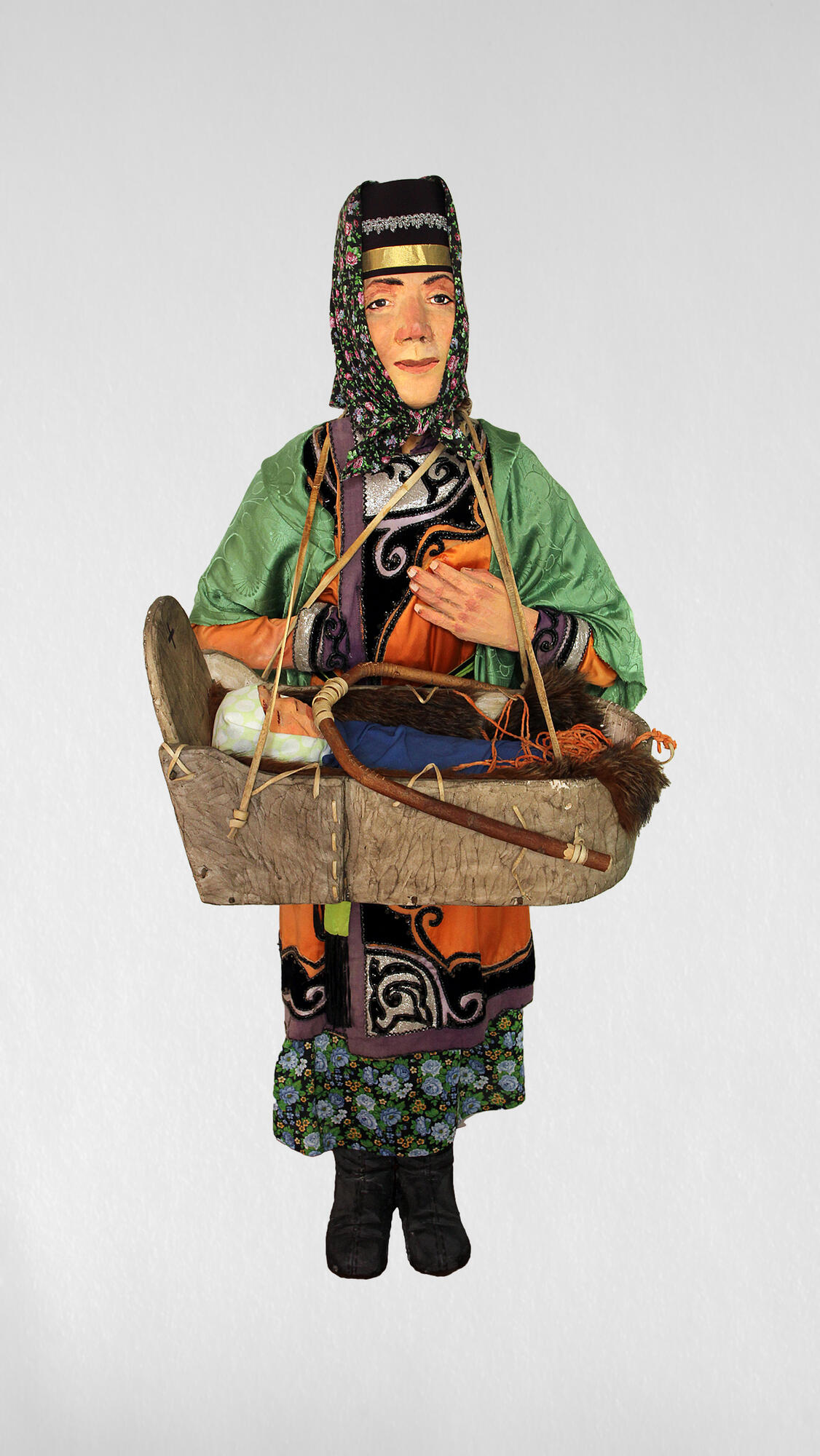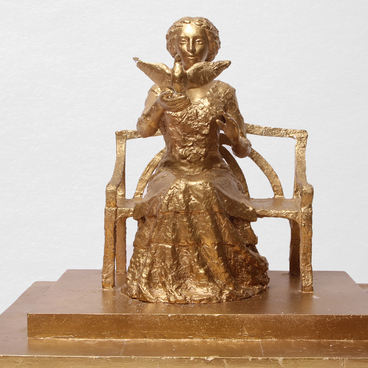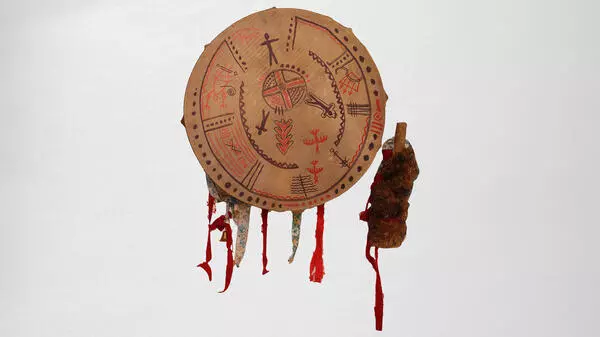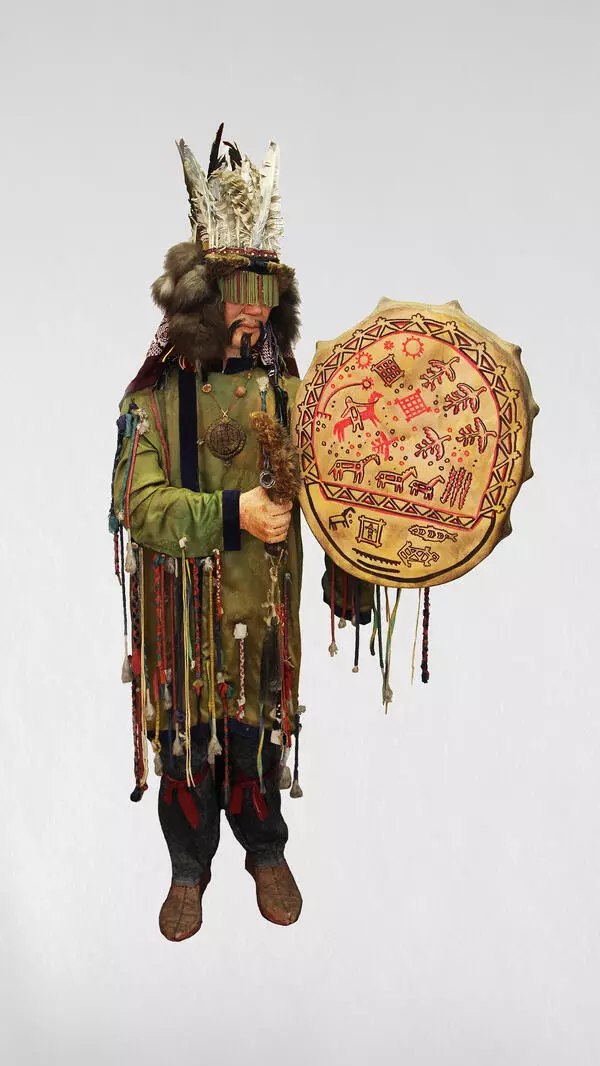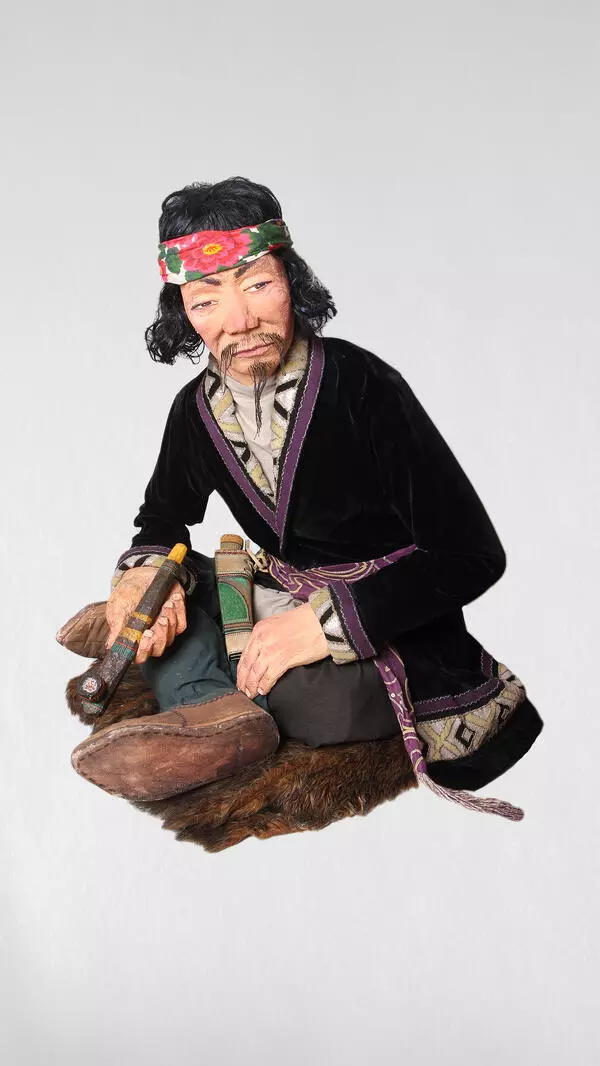Prior to the annexation of the Western Siberia to the Russia, in the 15th century, the Ostyako-Samoyeds lived in the Middle Ob and its tributaries. This nationality consisted of separate tribes unrelated to each other. Around the 17th century, these tribes divided into two territorial groups: southern and northern. The name ‘Selkups’ for them was first introduced by linguist and ethnographer Georgy Prokofyev in the 1930s.
Nowadays, the southern Selkups are more assimilated with the Russian population. They lost a lot of traditions and skills typical for peoples of the taiga zone of the Western Siberia. But the northern representatives of the Selkups still retain the ancient elements of everyday life, specifics of nutrition and outlook.
The main occupation of the northern Selkups was reindeer breeding. The winter clothing of men and women was parka — an open coat made of reindeer skins sewn fur-out. In severe frosts they wore sokuy — a furry blanket — on top of the parka. Under the parka men wore shirts and pants made of rovduga (rawhide), and women wore homespun dresses. An example of such attire can be seen on the doll of a Selkup woman, which is displayed at the exhibition of the museum.
The winter footwear for men and women were pimy and mukluks, types of fur boots. Many Selkups wore Russian boots during the summer. The cowl was a winter headdress, and in summer they wore headkerchiefs or turbans.
Fish has been the basis of the Selkups’ diet since ancient times. It was eaten boiled, dried and salted, fermented with sour berries, and ground into flour. Fish oil was prepared for the winter. They also ate the meat of elk, deer, game and waterfowl. The Selkups baked flatbreads from barley flour. In the taiga zone, pine nuts were harvested.
The Selkups especially worshiped fire because they believed that a special spirit, the mistress of fire, lived in it. Therefore, they treated the flame very carefully and even “fed” it with the same food that they ate themselves. The Selkups associated some prohibitions with fire: for example, it was forbidden to curse at a fire or to burn garbage in it. It was believed that if the flame was treated disrespectfully, it might become angry and punish them for improper treatment.
Nowadays, the southern Selkups are more assimilated with the Russian population. They lost a lot of traditions and skills typical for peoples of the taiga zone of the Western Siberia. But the northern representatives of the Selkups still retain the ancient elements of everyday life, specifics of nutrition and outlook.
The main occupation of the northern Selkups was reindeer breeding. The winter clothing of men and women was parka — an open coat made of reindeer skins sewn fur-out. In severe frosts they wore sokuy — a furry blanket — on top of the parka. Under the parka men wore shirts and pants made of rovduga (rawhide), and women wore homespun dresses. An example of such attire can be seen on the doll of a Selkup woman, which is displayed at the exhibition of the museum.
The winter footwear for men and women were pimy and mukluks, types of fur boots. Many Selkups wore Russian boots during the summer. The cowl was a winter headdress, and in summer they wore headkerchiefs or turbans.
Fish has been the basis of the Selkups’ diet since ancient times. It was eaten boiled, dried and salted, fermented with sour berries, and ground into flour. Fish oil was prepared for the winter. They also ate the meat of elk, deer, game and waterfowl. The Selkups baked flatbreads from barley flour. In the taiga zone, pine nuts were harvested.
The Selkups especially worshiped fire because they believed that a special spirit, the mistress of fire, lived in it. Therefore, they treated the flame very carefully and even “fed” it with the same food that they ate themselves. The Selkups associated some prohibitions with fire: for example, it was forbidden to curse at a fire or to burn garbage in it. It was believed that if the flame was treated disrespectfully, it might become angry and punish them for improper treatment.
